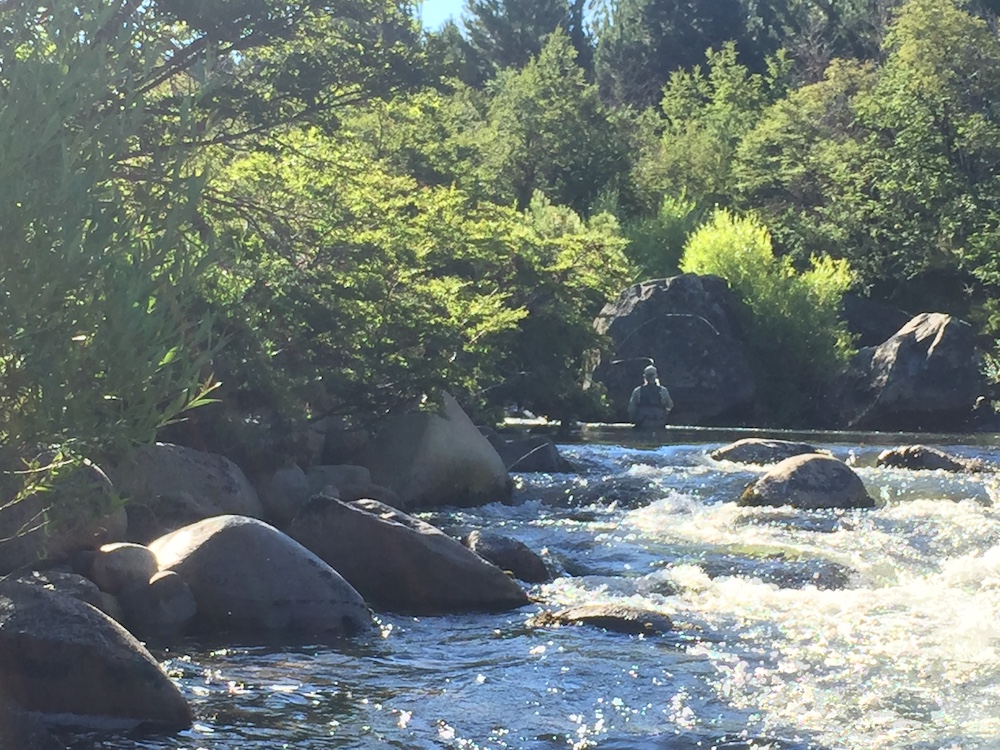
Words and photos courtesy of Mike Thompson.
Calculus is a much-used word lately, as pundits from all corners try to communicate what is happening in our politically riven world. It’s a good word, and one worthy of uses less loaded with attempts at existential conclusions. Here, I will use it to explain what every angler who travels afar to fish for that (fill-in-the-blank) fish of a lifetime either already knows or will learn eventually. It goes like this: if the trip takes at least a day of travel by air, land, or sea to reach a destination and another to return, the fishing days will be divided into three parts after subtracting the days of travel. It can be expected that during one-third of the trip, fishing will be good to excellent; one-third will be slow to poor fishing because of weather or some other excuse, and one-third will be just average. This will be true most of the time, whether the trip allows for three, six, nine, etc. days on the water.
I have recently returned from fishing nine days in northern Patagonia, Argentina. Travel each way roughly covered 6500 miles. Two separate nights were spent in towns or cities that merely put us in reach of flights needed to get to the estancia where we were to base the fishing portion of the journey. Our group consisted of six anglers in the first week and three in the second. Each of us came with our own loaded experiences of travel to faraway places: Finland, Iceland, New Zealand, Chile, Mexico, Belize, Christmas Island, the Bahamas, and all points in the U.S. We all knew the score and how it would be measured.
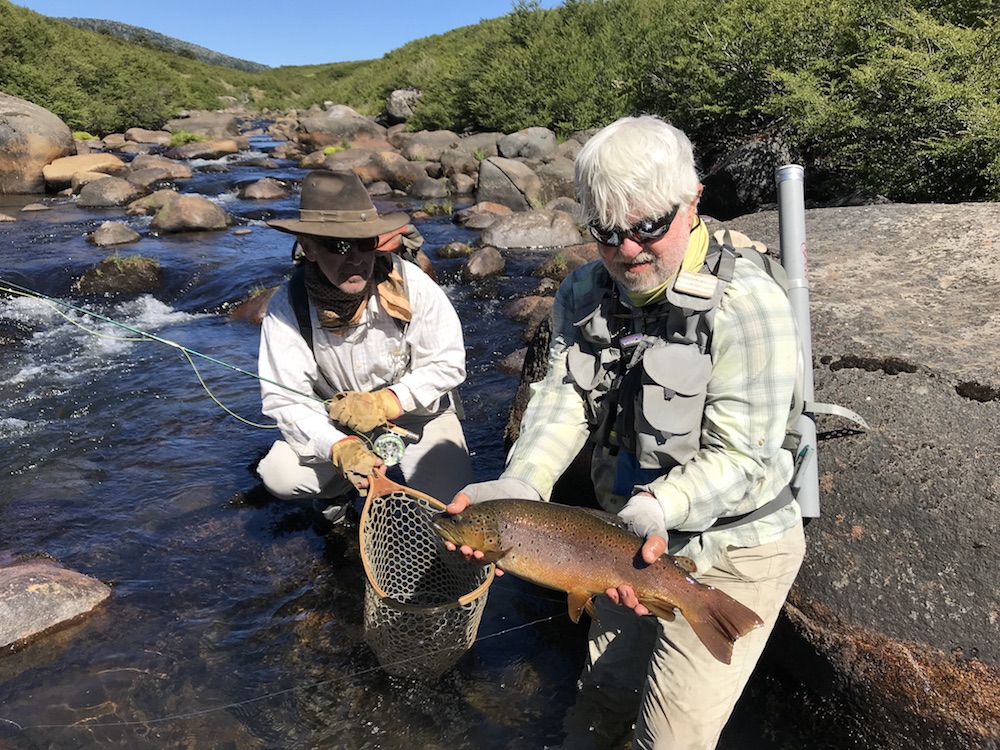
Half of our group had done the same northern Patagonia trip based out of an estancia near Alumine the year prior. Fishing then had been ok, but low water conditions had prevailed in the region for several years due to meager winter snowpack in the Andes and below-normal spring rains. Fish were caught, but fishing could have been better. This year the water conditions were as good as they had been in recent memory. Expectations on the part of the veterans from last year were high. For the other half of the group, all accomplished anglers, this would be their first time in Patagonia, and they couldn’t have been more excited.
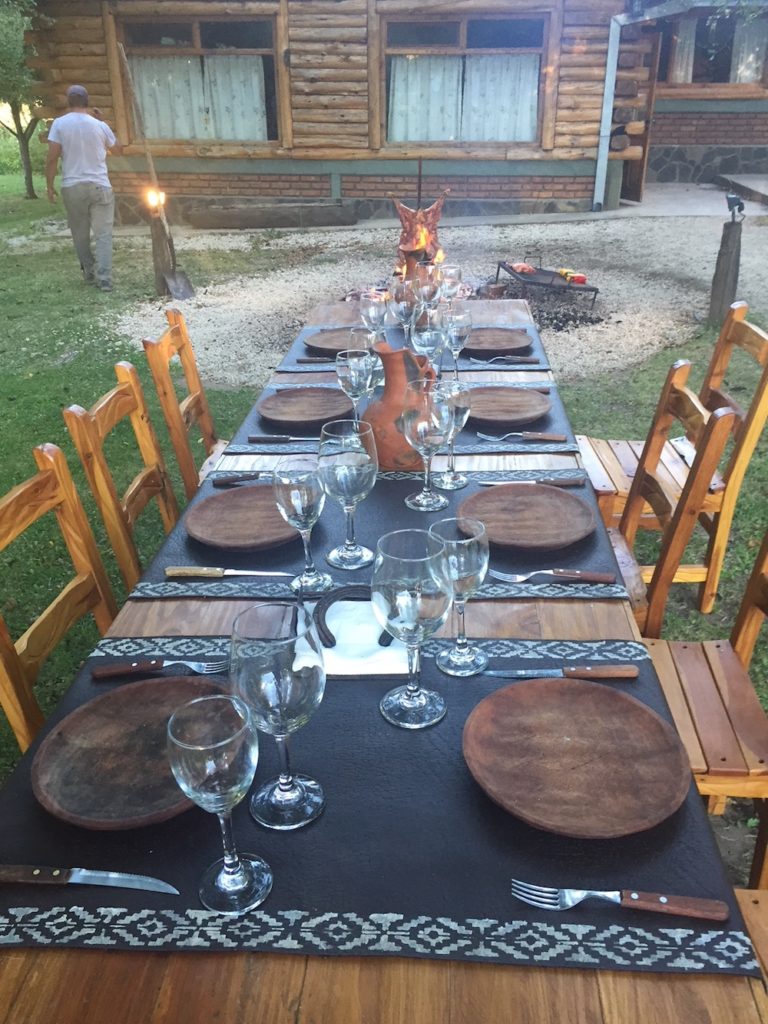
I tried and mostly succeeded in describing to my companions what the true essence of our fishing trip would really be about. It was the culture, the food, the wine, the people. Fish were merely a bonus. I figured that tack would cover the one-third when the fishing might suck. When the fishing was excellent, who would care what we ate or drank, and when it was so-so then a fine Malbec and a plate of empanadas would surely deflect any potential disappointment.
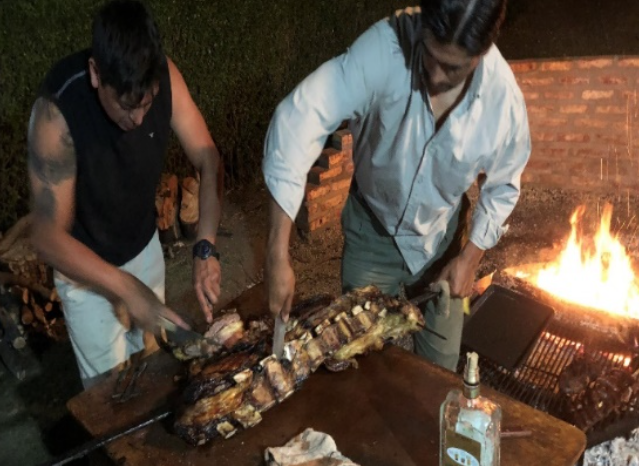
This trip, however, and the one last year, was for me much more than catching trout and posing for grip and grin photos. The setting was a family-owned working estancia that has been in the same family for at least three generations. My friend Joey had tried to get me to come and fish there for over a decade. Last year he succeeded, and now I am back again. The hook was that this was a small operation that created the type of experience that was Patagonia thirty years ago before the word got out and lodges on every drainage began to proliferate. The estancia could comfortably accommodate six people or eight if tight quarters were acceptable. Joey, who as of this season has been a resident of Argentina for twenty years, guiding for dorado and booking trips for U.S. fly fishers, stumbled upon this area in 2000 and the estancia in 2006. At that time fishing was primarily with streamers, and that is what the local guides promoted. Joey introduced dry fly fishing to some of them, and they haven’t looked back.
This is as good a time as any to flesh out the definitions of excellent, so-so, and poor experiences. The eye of the beholder is the lens through which all of this is viewed. Let’s start with the kind of fishing that exceeds one’s perhaps-wildest expectations. If it is pure weight and length that is the measure of success, then a fish-of-a-lifetime caught will qualify. It takes only one of those trophies, even if taken on an otherwise fishless day, to leapfrog that moment into the category of the finest. For some, the number of fish caught regardless of size is the reward sought. Seeing, hooking, and maybe or maybe not bringing a fine specimen to hand is enough to land the day a special place in one’s cherished memories. All anglers have their own requirement for what qualifies.

Last year I fished the Río Pulmari, a river that tested my ability to confidently move across swift water by wading, stumbling, slipping, and rock hopping. This was a river that intimidated me and made me wish for a nice day of floating or spring creek fishing. On that day, as I tried to both manage the physical demands of moving as I fished the pockets and swift water that surrounded and protected the impossibly small rock face shadows, overhangs, and hiding places of trout so large that they had no business even being there, I stumbled, literally, upon a drift that floated my dry fly into a feeding lane that hid a very large brown trout. It immediately struck, was hooked, the guide exhorted, “up you rod,” and a valuable lesson was learned, but no fish was landed. Big brown trout in tight quarters are going to dig in and either break off if the leader is too fine or rub the fly out of its mouth if given enough slack. The challenge with a three-kilo fish, which is the weight that both the guide and the angler, after seeing it come out of the water, agreed upon, is to keep it from doing what it wants to do; dive and escape. It did, and the vision was still with me when I fished a similar pocketed, swift section of the same river this year. Although the slipping and stumbling was the same, the outcome was different. A nice 21-inch brown came to the net of my guide Panchito, who had taught me to use heavier leaders and to keep the fish off balance and its head up. Other fish were hooked that day, but not an unusual number. The redemption brown is what made it special.
A day of average fishing is just that, average, although it can turn around quickly if something extraordinary interrupts. See above. So-so is relative to the days that surround it. If one is lucky, those days come early and do not dam up behind the special ones: which tends to diminish them rather than to allow them to stand on their own merit. Frankly, most days that we fish are average, but they serve as a baseline to judge the other two extremes. Inevitably there will come a day when results disappoint, which in turn makes mediocre fishing seem pretty good, and we wish we had more of them. On this trip, an average day was like the one we had on the Río Malalco: dozens of smaller fish were hooked; some were landed; most were small. Huge trout were spotted, spooked, and present often enough to let us know that we hadn’t gotten the best of the river. On a different section of the Malalco, the day before, one of our own caught a 25-inch brown, the trophy of the trip. So-so it goes.
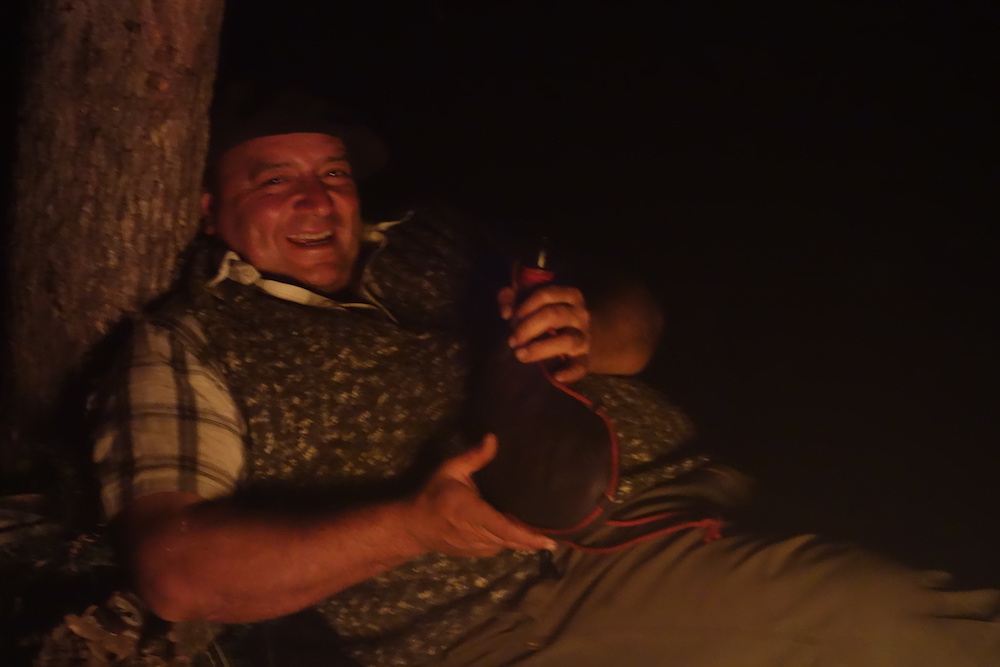
Now we get to the days that provide the most challenge: wind, clouds, rain, cold, and few to no fish taken. Here is where we are reminded that this trip is about more than catching fish large or small. This is the cultural experience that we had come for. We reveled and grew fatter on the fine food prepared in the estancia’s kitchen or on the outdoor fires of the asados. Chorizos, guisos, empanadas, chivito, pollo, chancho, bife, and cordero were all served at one meal or another. We dined al fresco, and the final night of the first week, which was the last asado for half of our group, was an all-nighter that featured folk singers from Zapala, as well as guest singing appearances by two of own fishing companions; Panchito our guide; Gusano the able assistant to our cocinero de asado; the mayor; and more. As is the custom, singing and drinking lasted until the shuttle for San Martín left at 5:30 a.m. I am proud to say that the heartiest member of our group was there to the very end, which is as it should be in Patagonia reál.





